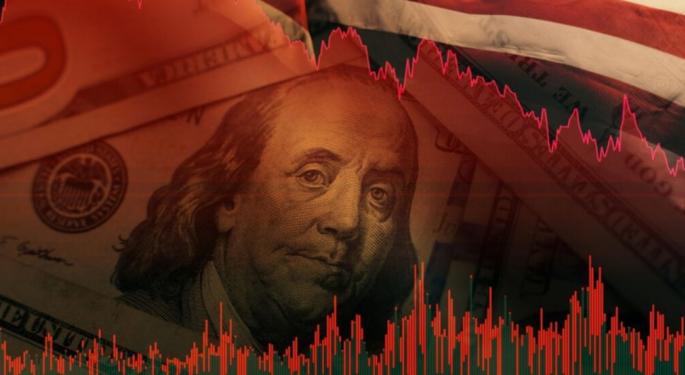Unaddressed Concerns Lurking Behind Fed's Positive Stress Test: The Most Vulnerable US Banks
In the Fed’s 2023 stress tests, all 23 large U.S. banks demonstrated that they have sufficient capital to absorb hypothetical losses of $540 billion in the severely adverse scenario.
The news brought optimism to the banking sector, with bank stocks represented by the Financial Select Sector SPDR Fund (NYSE:XLF) rallying 1.4% on Thursday. Goldman Sachs Inc. (NYSE:GS) and Wells Fargo & Co. (NYSE:WFC) led gains, rising 3.5% and 3.3%, respectively.
However, when looking at the Fed’s 2023 stress test, the devil is in the details as certain shocks may not prove fatal for the bank, but they can still lead to substantial losses within its portfolio.
Which US Banks Are Most Vulnerable To A Collapse in Commercial Real Estate Market?
Fed Chair Jerome Powell recently stated that commercial real estate (CRE) loans were mostly concentrated in small and medium-sized U.S. banks, and that large banks have a lower exposure to the risk.
Given the notable shifts in demand for offices and downtown retail, largely influenced by the pandemic and the rise of remote work, CRE loans have become a focal point of scrutiny in the 2023’s stress tests.
In a severely adverse scenario, the CRE market prices are expected to drop by 40% with large banks facing a substantial loss of $64.9 billion on their CRE exposures, equivalent to 8.8% of average balances.
Among the most vulnerable large banks to a CRE collapse are Goldman Sachs, Morgan Stanley (NYSE:MS), Citizens Financial Group Inc. (NYSE:CFG), Northern Trust Corp. (NASDAQ:NTRS) and Deutsche Bank AG (NYSE:DB).
Bank
Projected loan losses on CRE
% of average loan balanceProjected loan losses on CRE
$ billion
Goldman Sachs
16
1.8
Morgan Stanley
13.7
2.0
Citizens
12.4
4.0
Northern Trust
11.5
0.7
DB USA
11.2
0.4
RBC USA
10.3
2.2
Bond Paper Losses Are An Even Hotter Potato For U.S. Banks
Bank of America Corp. (NYSE:BAC) is facing the consequences of a decision made three years ago to invest the majority of its $670 billion of pandemic-era deposit inflows into debt markets when bond prices were high and yields were low.
As a result, BofA ended the first quarter of the year with over $100 billion in paper losses, according to data from the Federal Deposit Insurance Corporation, surpassing its largest peers in unrealized bond market losses.
Unrealized fixed income losses may cause banks’ margins to shrink, as holding onto these low-yielding investments may limit the bank’s income potential from customer deposits. The repercussions of these decisions are evident in the recent underperformance of Bank of America’s stock compared to its primary competitors.
Chart: Bank of America Has Underperformed Peers In 2023

Now Read: Tesla Nearly Sells Out Inventory In This Country As Monumental Q2 Looks More Inevitable
Photo: Shutterstock
© 2025 Benzinga.com. Benzinga does not provide investment advice. All rights reserved.
Posted-In: Bank of America banks Banks Stress test stress testLarge Cap Regulations Sector ETFs Federal Reserve



